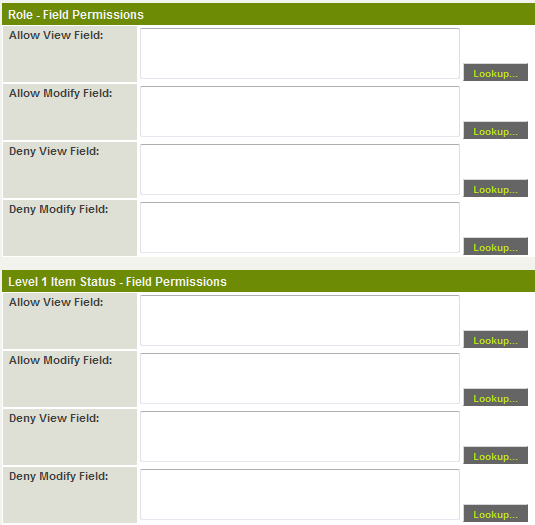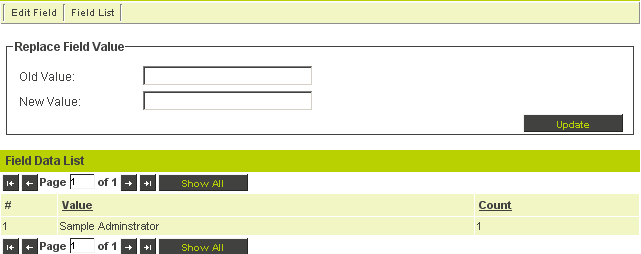Custom Fields – General Information
The following settings are common to almost all Custom Field types:
Display Order
- This setting determines the order that the field will be displayed on the page. The first field that is added to an entity will use a display order of 10.
- Additional fields that you add will automatically increase the display order by increments of 10.
- If you wish to insert a field between two fields you can set the display order to a number that will position the field where required.
- You can change the display order by setting the display order to a different number. For example, if you set the display order on a field to 5000 then the next field added will automatically become 5010.
Display Order with Related Entities
If you add custom fields to the basic contact entity and then add fields to roles associated with contacts, you will need to take care, as the fields will become mixed if they have the same number sequence.
The following table outlines where you need to be careful:
| Menu or Application | Search For |
| Organization, Search People | People: internal and external, related companies, standard and custom fields. |
| Communications, Contacts | External people only - limited search capabilities. |
| Universal Tracking Application > Contact Tab | Same page as the Search People page. |
| Universal Tracking Application > Company Tab | Same functionality as the Search People page, but with companies. |
| Sales Tracking Application > Company Tab | Same page as the Company tab in the UTA |
| Sales Tracking Application > Contacts Tab | Same page as the Search People page |
| Sales Tracking Application > My Contacts | Limited to contacts associated with companies where the current user is the owner. |
You should start the number sequence for these types of related fields at some higher level. For example, role 1 starts at 5000, role 2 starts at 8000.
Tab Order
- By adding a text value to the tab order to the field will be displayed on that tab.
- The tab name can be any text string required.
- Custom fields that are not associated with a tab will be displayed on a tab named Default.
Fields with No Tab Set
Same Fields with Tab set to Creation Details
Field Name and Field ID
- The field name is mandatory.
- The name can be up to 255 characters long and should not include special characters that could be misinterpreted by the browser.
- The Field ID is automatically generated by the system as a number value and is displayed to the right.
Referencing Fields Names and Field ID in other Custom Fields Types
You can reference fields by name or by ID in other fields. The following field types support this type of referencing:
- Display Only – External Entity Details.
- Display Only - Web Page View.
- Special – Calculated Value.
The syntax for these field types varies (some are processed on the server and other in a JavaScript in the client) and is explained for the individual field type.
Special Field Name Syntax
There are two special characters that can be used to prefix the field name. These prefixes control the presentation on the field name in relation to the presentation of the data.
- The Tilde ~ is used to display the field name above the field.
- A Hyphen “-“ is used exclusively with the Title Bar – Multiple Columns field to suppress the title bar but display a multiple column layout.
- A @ sign can be used with the built-in field Location in the Universal Tracking Application to connect the field to the user’s selected mapping service.
Field Type
The field type is used to define the characteristics of the field. There are 40 field types currently available.
Visibility Condition
Whether or not a custom field is visible can be controlled using conditional statements in this box.
See Visibility Condition for more information.
Role Field Permissions and Status Field Permissions
Access to a custom field is controlled by permissions.
See Role Field Permissions or Status Field Permissions for more information
How Field Data is Stored
Custom field data consists of two general types – text type fields and object type fields.
- Text Types fields are stored in the database as text strings.
These fields are fully searchable to any related application. For example, role level fields can be searched though the Search People feature or any application that provides access to contact data.
You can also search and replace these values in bulk by using the Field Data tab and specifying the old and new value required.
- Object Type fields are stored on the server in a resource folder on the server.
These fields can consist of files of any type such as documents or images. Document type fields are searchable provided the File Index option is selected (this option is only available for these types of fields).
Import and Export Custom Fields
You can use the custom field Import and Export features to move or copy custom fields from one entity to another (or even another instance of SmartSimple). The custom fields are exported and importing by using XML format.
Custom Field Types
The full list of Custom Field Types can be found on the Category:Custom Fields page.








